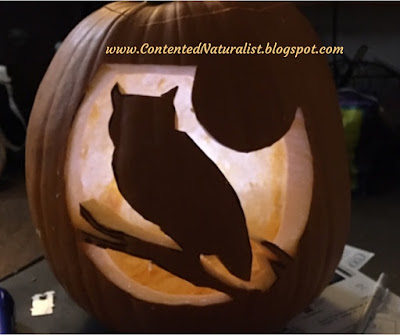 |
| One of the Purple Finches, who seem to have moved on. Perhaps more will show up soon! |
For example, some birds are normally insect-eaters. Some of those head south for the winter, but others who breed up in New England are arriving in my area right now. They’re helpful picking off any aphids or beetles still lurking in my garden. I recently watched a Ruby-crowned Kinglet flutter around my yard, presumably plucking insects off the undersides of leaves. I’ve also watched wrens busily exploring under my garden bench and in the eaves of my porch, plucking spiders out of the dark corners. By allowing insects and spiders to live in your yard, you also help feed many birds!
 |
| We only see Ruby-crowned Kinglets in the winter around here, so it's always exciting when I spot the first one for the season. |
 |
| "Hmm, any tasty bugs up there?" |
Later, as winter drags on, insects are harder to find. So a lot of these birds will be looking for additional food, such as berries or other small fruit. Shrubs like Serviceberry or Spicebush, and trees like Crabapple or Dogwood provide the food that will help these birds survive the cold. Any of these plants would make great additions to your wildlife garden. I usually recommend native plants, but even some ornamental and non-native plants can provide food. The Bradford Pear in my neighbor’s yard has recently been filled with Robins, Blue Jays, and Starlings devouring its small, hard fruits.
In previous years I've sometimes seen Cedar Waxwings in that tree too, although they haven't shown up yet this year.
Shrubs also collect leaves and other detritus like twigs and bark chips beneath them. That’s where lots of garden invertebrates live, such as snails, sowbugs, spiders and insects. Since birds also like to perch in the branches at night, by planting shrubs you’re essentially providing a birdy bed and breakfast!
Because I let most of my plants die back naturally and don’t do much deadheading (removing old flowers before they become seeds) or other fall “cleanup”, I have lots of different seeds for my winter visitors, in addition to the sunflower seed in my feeders. Some birds that are seed eaters don’t come to feeders, so I can still attract and feed them by taking a hands-off approach in the garden. (Less work for me, too-- bonus!) Currently I have seedheads from Ironweed, Joe-Pye Weed, Boneset, Echinacea, Rudbeckia, and Agastache in my garden. This also means that on days I forget to refill my feeders, there is still food available for the birds.
 |
| A Purple Finch female nibbled on some of the Ironweed seeds in between feeder visits. |
Finally, birds need water just as much as we do. When the temperature is below freezing, many of the local birds’ usual sources may be frozen over or hard to reach. Providing water can attract many birds that shy away from traditional feeders. If you have a bird bath already, you’ll need to have a way to keep it from freezing over too. I’ve experimented with DIY methods over the years, reluctant to buy a gadget if it wasn’t really necessary. I tried just pouring boiling water onto the ice in my birdbath every morning, for example. The birdbath refroze pretty quickly, though, so that didn’t seem like a very good alternative. In fact, I never saw birds take advantage of the warm water for the short time it was thawed each morning. There probably wasn’t enough time for them to notice the water. So I ended up using an aquarium heater to keep my birdbath thawed. That heater died last winter, though, so I’ll have to get a new one soon.
If you want to provide habitat to help migrating songbirds this fall and winter, it’s really as easy as leaving seeds and fallen leaves in your garden and yard. Remember, messier is better for birds in your garden in the wintertime! I’ve posted before about my messy garden too.
I hope you see interesting birds in your yard and garden this winter! I’d love to hear about them in the comments.

